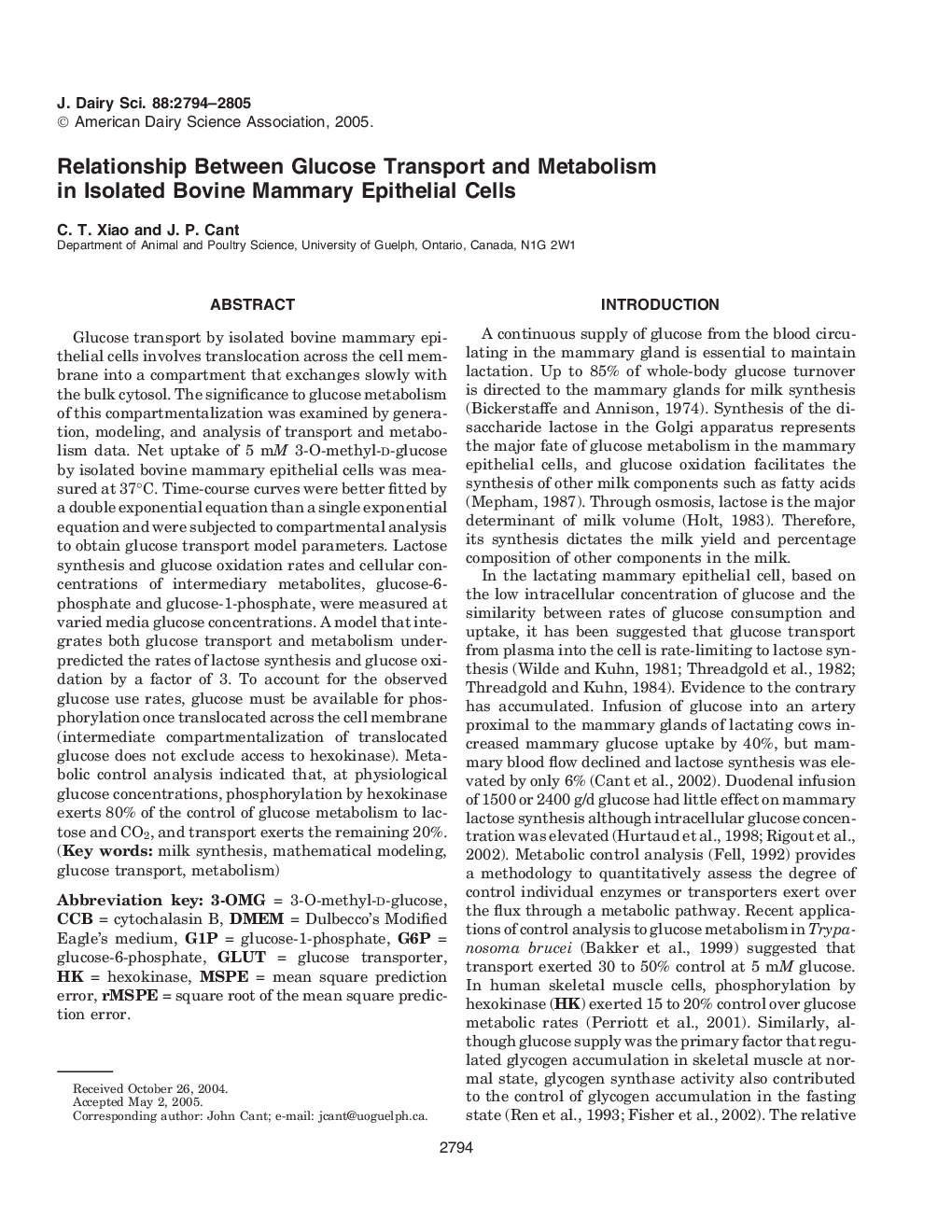| Article ID | Journal | Published Year | Pages | File Type |
|---|---|---|---|---|
| 2441527 | Journal of Dairy Science | 2005 | 12 Pages |
Abstract
Glucose transport by isolated bovine mammary epithelial cells involves translocation across the cell membrane into a compartment that exchanges slowly with the bulk cytosol. The significance to glucose metabolism of this compartmentalization was examined by generation, modeling, and analysis of transport and metabolism data. Net uptake of 5 mM 3-O-methyl-d-glucose by isolated bovine mammary epithelial cells was measured at 37°C. Time-course curves were better fitted by a double exponential equation than a single exponential equation and were subjected to compartmental analysis to obtain glucose transport model parameters. Lactose synthesis and glucose oxidation rates and cellular concentrations of intermediary metabolites, glucose-6-phosphate and glucose-1-phosphate, were measured at varied media glucose concentrations. A model that integrates both glucose transport and metabolism under-predicted the rates of lactose synthesis and glucose oxidation by a factor of 3. To account for the observed glucose use rates, glucose must be available for phosphorylation once translocated across the cell membrane (intermediate compartmentalization of translocated glucose does not exclude access to hexokinase). Metabolic control analysis indicated that, at physiological glucose concentrations, phosphorylation by hexokinase exerts 80% of the control of glucose metabolism to lactose and CO2, and transport exerts the remaining 20%.
Keywords
Related Topics
Life Sciences
Agricultural and Biological Sciences
Animal Science and Zoology
Authors
C.T. Xiao, J.P. Cant,
